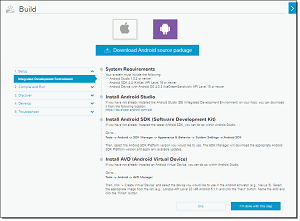News
AWS Playing Catch-Up with Mobile Hub Back-End
- By David Ramel
- October 14, 2015
Normally known for being a clear leader in cloud computing services, Amazon Web Services Inc. (AWS) has been a little late to the Mobile-Back-End-as-a-Service (MBaaS) party, but it's playing catch-up with a new product unveiled at its recent re:Invent conference in Las Vegas.
Among a plethora of products and services, AWS announced a preview of its new mobile hub for building, testing, and monitoring mobile apps that use services from the Amazon cloud.
Basically, with the AWS Mobile Hub, now in beta, AWS is following its competitors in the MBaaS arena. For example, the AWS mobile hub preview comes more than three years after Microsoft introduced Windows Azure Mobile Services. The Google Cloud Platform, meanwhile, discontinued its Mobile Backend Starter sample app last year and pointed to developers to Google Cloud Endpoints, which became generally available in November 2013. AWS customers could previously get MBaaS functionality for their mobile apps via third-party services such as Kony.
MBaaS (or sometimes BaaS) solutions generally simplify the configuration and plumbing required to hook mobile (or Web) apps into server databases, and typically provide via APIs other services such as business logic user management, push notifications and social service integration.
The AWS Mobile Hub provides those services and adds content delivery and analytics, all of which can be managed from one integrated console.
"The AWS Mobile Hub helps you at each stage of app development: configuring, building, testing, and usage monitoring," an AWS blog post states. "The console is feature-oriented; instead of picking individual services you select higher-level features comprised of combinations of one or more services, SDKs, and client code. What once took a day to properly choose and configure can now be done in 10 minutes or so."
 [Click on image for larger view.]
A Source Package Can Be Downloaded for Further Development (source: AWS)
[Click on image for larger view.]
A Source Package Can Be Downloaded for Further Development (source: AWS)
According to spokesman Jeff Barr, the hub guides developers through a five-step process: setup; compile and run; discover; develop; and troubleshoot. Developers of mobile iOS or Android apps can create a project and select the AWS services they want it to be able to use, such as User Sign-In or Push Notifications, which are then automatically provisioned for the app. A working "quickstart app" can then be downloaded for further IDE-based development in Objective-C (iOS) or Java (Android). It comes with SDKs, libraries and initialization code, along with examples of how to use the services the developer requested to be provisioned.
After development, coders can test their apps on the AWS Device Farm, which saw iOS testing added in July.
Finally, after deployment, Amazon Mobile Analytics can be used to measure app usage and revenue and track metrics such as the number of new and returning users and their behavior.
Using the mobile hub doesn't incur any additional charges beyond the underlying AWS services used.
About the Author
David Ramel is an editor and writer at Converge 360.